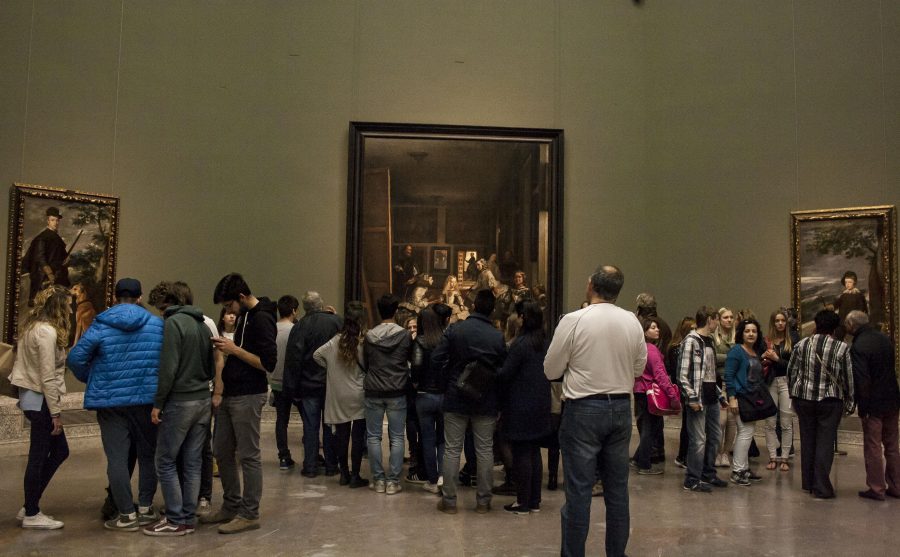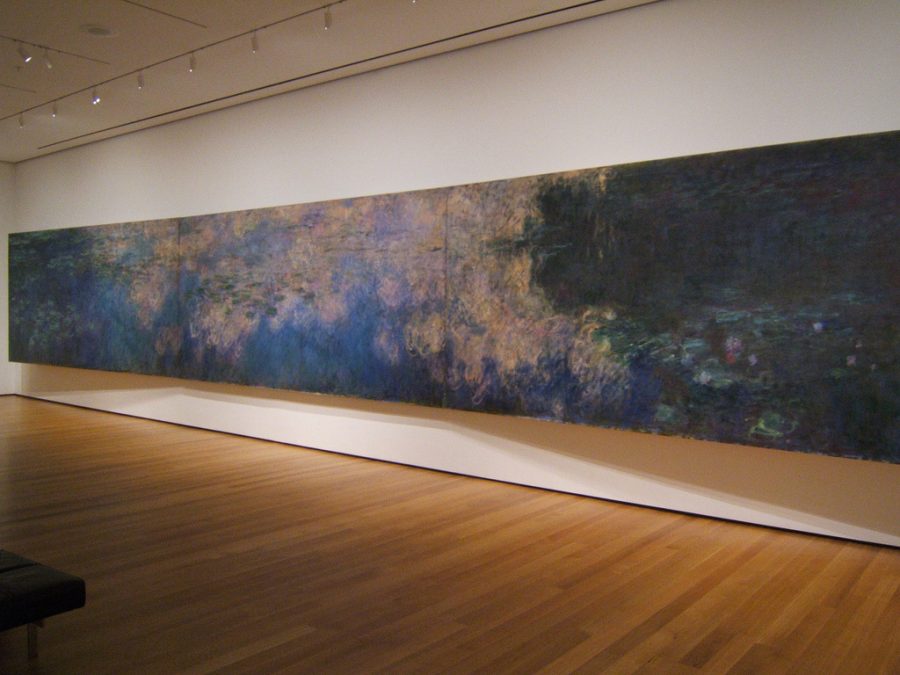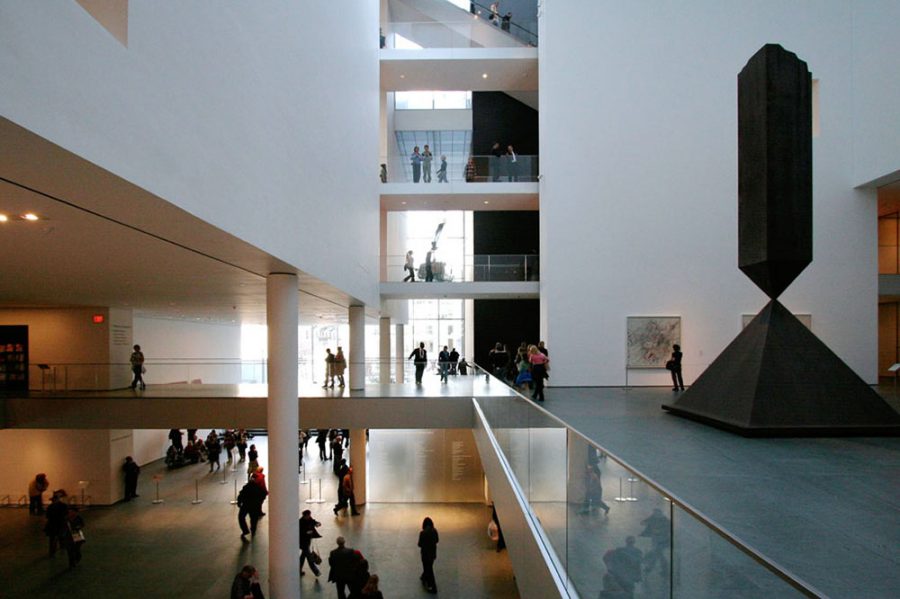As an art player of the Rock Bridge Quiz Bowl team, I have the opportunity to study artworks on a weekly basis. During this process, I came across Diego Velázquez’s Las Meninas (English translation: The Maids of Honor). This piece of artwork quickly became one of my all-time favorites.
Even though I was not in the Prado in Madrid looking directly at Las Meninas, I could still appreciate the painting’s depth and size. As a devout student of art, I have always admired Velázquez for his techniques and attention to details, and to be able to study his art in a deliberate manner is a pleasure.

Velázquez is actually the figure standing next to the large painting. In the center of the painting stands the princess attended by maidens of honor and some other attendants. Behind the painter is a mirror that can easily be overlooked. We know that it is a mirror thanks to the amount of details that Velázquez put into this part of his work. If we scrutinize the object, we can see its bevel-edged glass, glossy nature and the reflection of the king and queen of Spain.
There are different theories on what the reflection actually depicts. Some people claim that it is a reflection of the large painting, which is a royal portrait. Others suggest the mirror exists so that the viewer can see themselves as the nobility, examining the scene that is taking place in the painting. Regardless of the artist’s intention for it, the mirror provides a deeper meaning to what would otherwise be a simple depiction of court life.
When Las Meninas was created, the Spanish empire was going through a difficult time. King Phillip lost both his first wife and his heir to the throne. This historical context provides a justification for many components of the painting. The Infanta Margarita Teresa, the king’s only living child at the time, is the only foreground object that is being illuminated by the lights from the windows, representing the glimmer of hope in the midst of struggle.
There are many objects, such as the lights on the ceiling, that draw attention back to the mirror reflecting the royal couple. The king and queen’s age and the melancholy in their eyes are concealed by the mirror’s blurry nature. The two competing focal points of the artwork — the princess and the mirror — signifies a contrast between an idealized world and the real world for the Spanish empire.
There are many artworks that I have come across and have forgotten, but Las Meninas is one that still remains with me today. It is one that is often discussed in art classes around the world, and one that comes up most often in my Quiz Bowl tournaments.For these reasons and more, I find myself going back to admiring the painting, reading into its history and even trying to replicate some of the techniques that Velázquez employed in creating it.
What part of the painting drew your attention first? Leave a comment below!



























































































